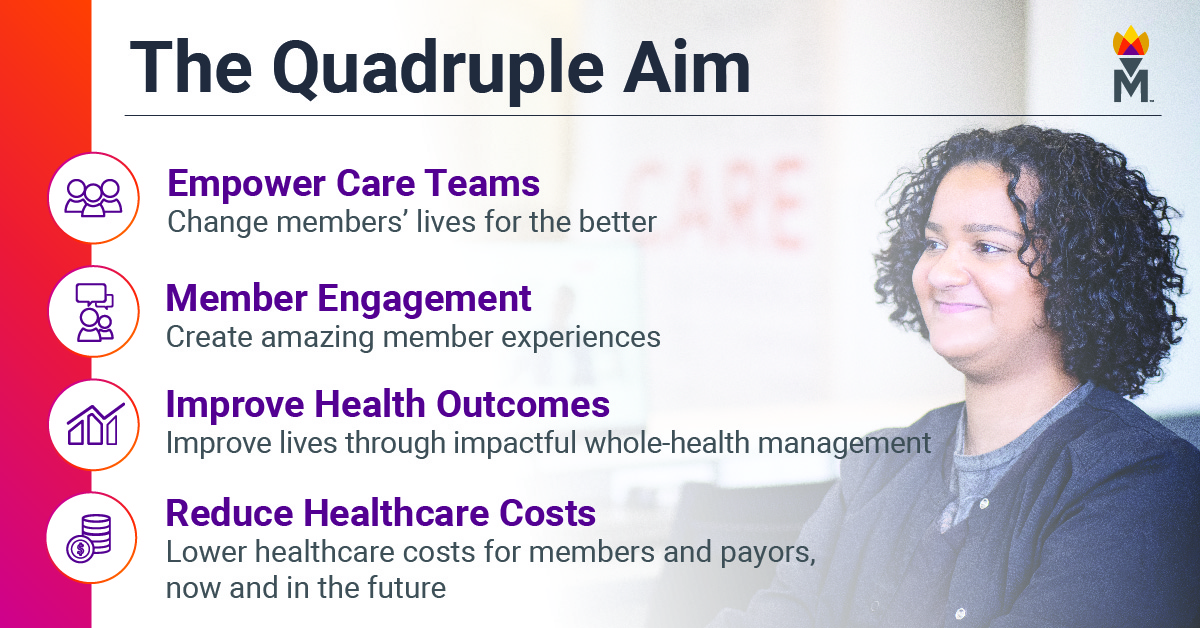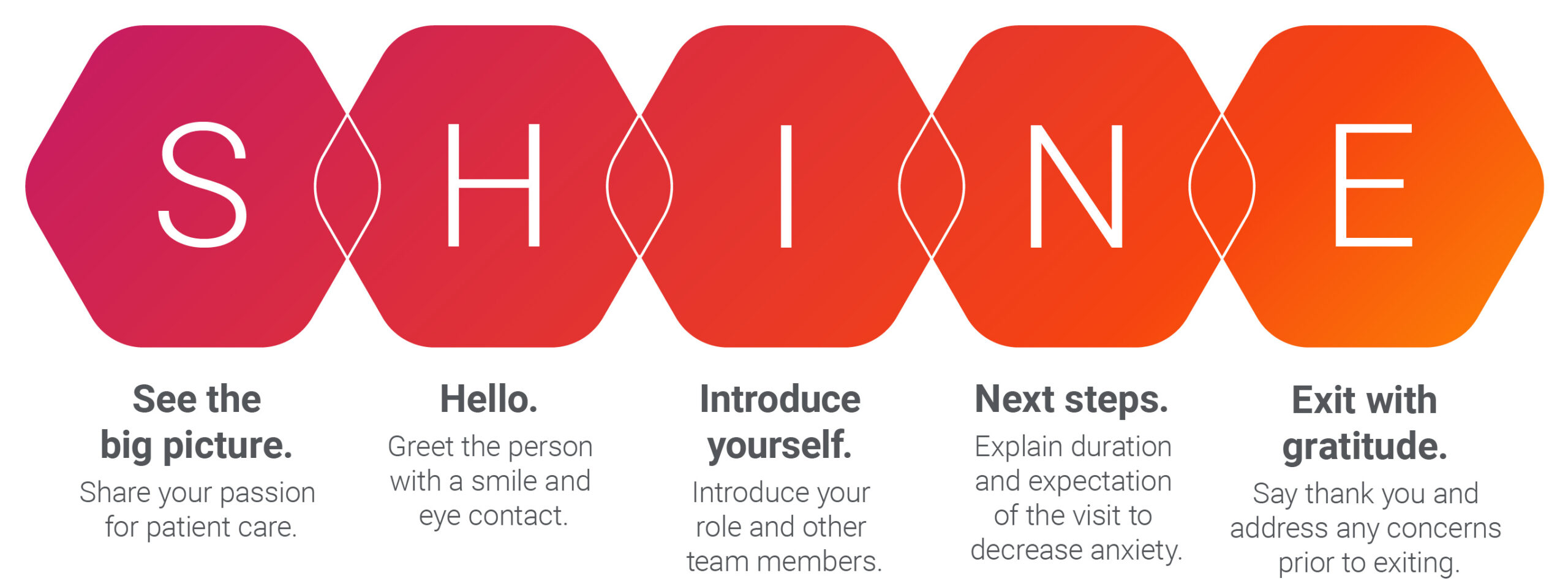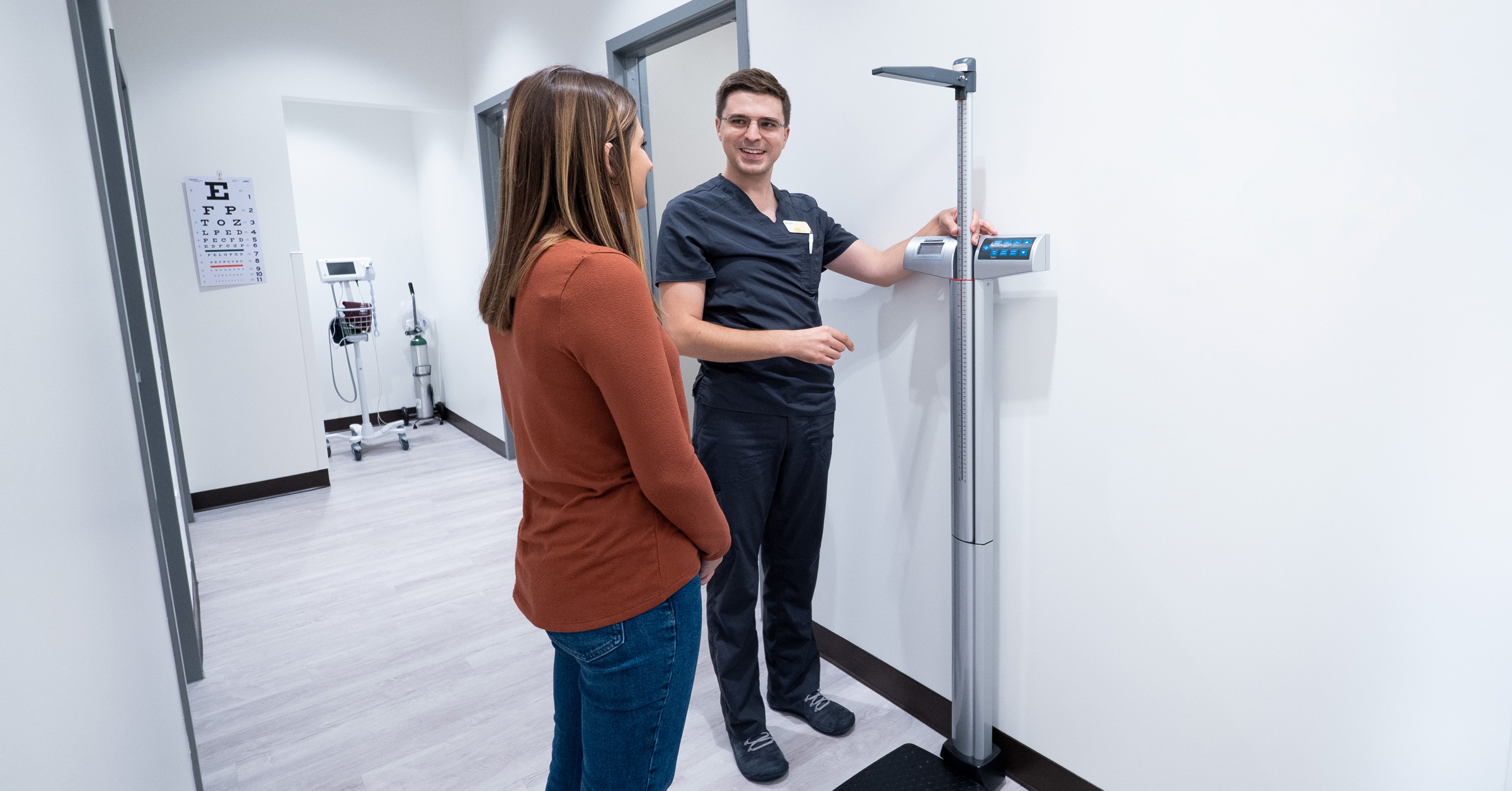Marathon Health is on a mission to transform 1 million lives by 2024. While it sounds like a tall order, we enjoy a challenge almost as much as we like helping people live healthier lives. The Quadruple Aim, a framework for how Marathon Health operates, fuels this mission by focusing on four areas:
1. Empower care teams
2. Engage members
3. Improve health outcomes
4. Reduce healthcare costs
The Quadruple Aim guides everything we do, from hiring and training new ambassadors to hosting flu shot clinics or following up with patients who have chronic health conditions. Read on for real-life examples of the Quadruple Aim in action.

1. Empowering Care Teams is Core to Quadruple Aim
After a decade as a nurse practitioner at a family practice, Marcie Kessel was looking for better work-life balance. That’s when she found Marathon Health.
“Marathon Health has been life-changing for my health, my family’s happiness and my professional life,” says Kessel, who is Marathon Health’s Clinic Director for Empower Retirement in Denver. “Over the years, they’ve offered me professional development opportunities I’ve never received from any other employer. They’ve also encouraged growth in developing areas outside of just the clinician’s role.”
Marathon Health providers receive an intensive two weeks of training, as well as ongoing peer support and education, including webinars and monthly Continuing Medical Education credit opportunities. “Offering people chances to develop and grow, even if they’re in their same role, keeps them happy and provides a sense of meaning,” says Tracey Campbell, Nurse Practitioner and Director of Clinical Education for Marathon Health.
Marathon Health also empowers providers by giving them tools they need to succeed, such as allowing for longer visit times so providers can truly get to know their patients and teaching motivational interviewing.
“This approach to taking a patient’s history allows you to build a better rapport with them,” says Steve Toth, Physician Assistant and City of Fort Collins Marathon Health Clinic Director. “And the beauty is I now have time to do that. In an urgent care setting, I saw 48 patients a day. That’s just unhealthy and unsafe. You have to build your credibility with the patient to make a connection. And that connection is key to having them succeed.”
Toth started at Marathon Health less than a year ago. “It’s the best career change I’ve ever made,” he says. “It made me return to the why — why I got into medicine. The way Marathon Health practices medicine is wellness-driven and prevention-based. While we treat conditions that require medication, I’d rather prevent patients from needing medication in the first place. Coming here has been eye-opening.”
Marathon Health also offers a National Board for Health & Wellness Coaching (NBHWC) certification prep course — one of 80 in the world.
“Much time, expertise and development work are required to be recognized as an approved national training program for the NBHWC exam,” says Debbie Richardson, Marathon Health Regional Wellness Team Lead and Health Coach. “It allows us to build up the standard of coaching in a way that will make a big difference across the board. In the fall, we’re going to have 50+ folks sitting for national boards. This raises the standard and raises the expectation on the caliber of coaches we employ.”
2. Creating Amazing Patient Experiences by Engaging Members in their Healthcare
Empowering care teams leads right into patient satisfaction. “If our ambassadors are happy at work, their patients typically have exceptional experiences,” Campbell says.
Marathon Health providers use a patient service model called SHINE to provide positive experiences.

In addition, longer appointment times allow providers to develop better patient relationships. Building those personal connections instills confidence and trust, which Kessel says encourages patients to share more with their medical professionals and continue visiting the health center. And those relationships go beyond the exam room. “I have a couple patients with COVID right now, and I call them every day to check up on them,” Kessel adds.
Richardson notes the autonomy gained through working outside of a fee-for-service model removes a barrier for clients to access coaching services. “I shut the door, and it’s just me and the patient, and the patient drives the session,” she says. “Each coaching session is unique. The patient is the expert on their own body and life. As coaches, we come alongside patients to create a safe space for them to determine how they want to proceed in improving the status of health.”
3. Improving Health Outcomes
Empower Retirement’s Marathon Health center conducts outreach with employees who experience chronic conditions like diabetes or high blood pressure.
“We work with the employer to create programming around their highest risk population and try to engage those folks,” Kessel says. “We reach out to them individually and touch base to see if there’s anything we can do to help. And sometimes it’s not going to be them coming into the clinic, but making sure they’re seeing their primary care provider or specialist.”
Richardson co-facilitates a yearlong Group Lifestyle Balance program developed by the National Diabetes Prevention Program, which focuses on reducing lifestyle risks related to obesity, high blood pressure, elevated blood sugars or elevated cholesterol levels. “Through regular group sessions that include educational content and support from group members and the facilitator, our group has lost 242 pounds so far,” Richardson says.
Campbell explains how Marathon Health providers make meaningful differences every day. “Recently at one of our health centers, a provider conducted a Department of Transportation physical on a patient and couldn’t certify them due to high blood pressure,” she says. “Within six months of health coaching, that person was off of all blood pressure medications and DOT-certified.”
4. Reducing Healthcare Costs
The Marathon Health care delivery model results in lower costs for both patients and employers. Patients receive discounted lab and prescription medication services, and better access to healthcare providers.
“If you have to leave for a doctor’s appointment across the city and take four hours out of your day, that’s not productive,” Campbell says. “But if you can go down to the fifth floor for 30 minutes, that’s a huge improvement in loss of productivity.”
The more engaged patients are with health programming, she adds, the less they end up needing to utilize medical care.
On average, employers save up to $2,000 for each employee who engages with Marathon Health. To break it down further, client data shows how patients diagnosed with a chronic condition who engage with Marathon Health cost their employers 31% less than similar cohorts who do not engage with chronic condition management.
The biggest differentiator in the Quadruple Aim, according to Campbell, is its approach to empowering clinicians. “That includes making sure they’re happy at work,” she says. “If that happens, typically the patient will have an exceptional experience. The more exceptional experiences they have, the more they’ll engage with the health center, which leads to better outcomes. And if all of those things fall in place, there’s not anything extra you need to do. The client’s going to save money no matter what.”
You might also like
Subscribe to our newsletter and stay on the cutting edge of worksite healthcare.









